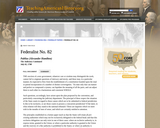
This is the last of five essays written by Hamilton on the Judiciary in relation to the extent of its powers.
- Subject:
- Social Studies
- Material Type:
- Reading
- Provider:
- Teaching American History
- Date Added:
- 07/03/2017

This is the last of five essays written by Hamilton on the Judiciary in relation to the extent of its powers.

Hamilton discusses the objection that “has met with most successâ€: “the want of a constitutional provision for the trial by jury in civil cases.†This is the longest essay in The Federalist and the last of six essays in The Federalist that identify specific authors of Antifederalist writings. Here, it is the “absolutely senseless†Report of the Pennsylvania Minority and the propositions of the Massachusetts Convention on trial by jury.
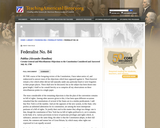
This second longest essay in The Federalist contains twenty-four paragraphs. Hamilton begins with a discussion of 2) “the most considerable†of the “remaining objectionsâ€: “the plan of the convention contains no bill of rights.†This is contained in 1-12. He then turns in 13-15 to 3) the location of the seat of government. An “extraordinary†objection is 4) “the want of some provision respecting the debts due to the United States.†This is covered in 16. He turns, finally, in 17- 24, to the claim that 5) “the adoption of the proposed government would occasion a considerable increase of expense.â€
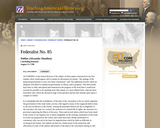
Hamilton informs his readers that “that there would appear still to remain for discussion two points {outlined in Federalist 1}: ‘the analogy of the proposed government to your own State constitution.’ And ‘the additional security which its adoption will afford to republican government, to liberty, and to property.'†These topics have been “exhausted†in previous essays. “I never expect to see a perfect work from imperfect man.†Surely the plan of the convention is more perfect than what we have under the Articles? Let’s not call for another convention. Furthermore, isn’t it better to “obtain subsequent amendments than previous amendments to the Constitution?†Remember, “seven out of the thirteen States†have already ratified the plan of the convention.
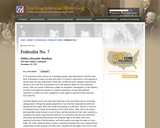
This resource provides information on Federalist No. 8. The Federalist Papers were originally newspaper essays written by Alexander Hamilton, James Madison, and John Jay under the pseudonym Publius, whose immediate goal was to persuade the people of New York to ratify the constitution.
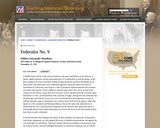
This resource provides information on Federalist No. 9. The Federalist Papers were originally newspaper essays written by Alexander Hamilton, James Madison, and John Jay under the pseudonym Publius, whose immediate goal was to persuade the people of New York to ratify the constitution.

Students explore the Articles of Confederation and the revisions that created the US Constitution of 1787. Students analyze and assume the views of Federalist and Atnti-Federalists by participating in a partner debate over North Carolina's ratification of the US Constitution as either North Carolina Federalist James Iredell or Anti-Federalist Willie Jones. The lesson culminates with students writing and delivering a persuassive speech as a historical Constitutional framer with Federalist or Anti-Federalist views.

Narrated by Bowdoin College Government Professor Andrew Rudalevige, "Founding Principles" provides an introductory overview and basic understanding to American government, but one that is crucial to building citizen-leaders, promoting civic engagement, and working toward the common good.
Chapter Fifteen reviews the important aspects of the American system of government and encourages viewers to use their knowledge to get involved in their own political world.

Narrated by Bowdoin College Government Professor Andrew Rudalevige, "Founding Principles" provides an introductory overview and basic understanding to American government, but one that is crucial to building citizen-leaders, promoting civic engagement, and working toward the common good.
Chapter Four discusses the power of the president and where the limits in power exist.

Narrated by Bowdoin College Government Professor Andrew Rudalevige, "Founding Principles" provides an introductory overview and basic understanding to American government, but one that is crucial to building citizen-leaders, promoting civic engagement, and working toward the common good.
Chapter One discusses how the American Government was formed in the late 1700s, including the creation of the Constitution.

Narrated by Bowdoin College Government Professor Andrew Rudalevige, "Founding Principles" provides an introductory overview and basic understanding to American government, but one that is crucial to building citizen-leaders, promoting civic engagement, and working toward the common good.
Chapter Two discusses the differences in national and state government systems and what levels of power exist therein.

The purpose of this lesson is to help students gain a deeper understanding of the U.S. Constitution and the Bill of Rights which contains their rights as citizens or future citizens of the United States of America. In this multi-day lesson, students will analyze the U.S. Constitution and discuss the many compromises that took place at the Constitutional Convention. They will inspect the 27 amendments to the U.S. Constitution and choose one that they feel is most important and defend their choice in a written response. Students will be recognizing perspectives, communicating ideas, and taking action by analyzing the U.S. Constitution and choosing an amendment that is most important to them and writing a letter to a future generation of adolescents to explain and defend their chosen amendment. This lesson was developed by Dorothy Kerby as part of their completion of the North Carolina Global Educator Digital Badge program. This lesson plan has been vetted at the local and state level for standards alignment, Global Education focus, and content accuracy.

This lesson explores the Federalist Papers. First, students engage in a discussion about how they get information about current issues. Next, they read a short history of the Federalist Papers
and work in small groups to closely examine the text. Then, each small group presents its ideas to the class as a catalyst for further, large-group discussion. Finally, students work in small groups to research a Federalist or Anti-Federalist and role-play this person in a classroom debate on the adoption of the Constitution. Writing activities follow that allow students to use their understanding of the history and significance of the Federalist Papers.
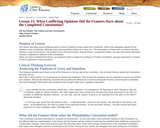
This lesson describes some conflicting points of view of leading Framers about the Constitution. Most of the delegates argued for the adoption of the Constitution, although many had reservations about all or parts of it. The reservations of three were so serious that they refused to sign the document. The position of one of these Framers, George Mason, is explored in detail. Students will also examine Benjamin Franklin's statement in defense of the Constitution. When they have completed this lesson, they should be able to explain the positions of Franklin and Mason, and give arguments in support of and in opposition to these positions.
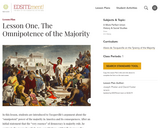
In this lesson, students are introduced to Tocqueville's argument about the "omnipotent" power of the majority in America and its consequences. After an initial statement that the "very essence" of democracy is majority rule, he contrasts the means by which state constitutions artificially increase the power of the majority with the U.S. Constitution, which checks that power.
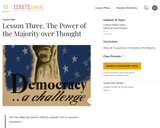
In Tocqueville's discussion of how the majority in America constrains freedom of thought, he makes some of the most extreme criticisms against democracy. For example, he says "I do not know any country where, in general, less independence of mind and genuine freedom of discussion reign than in America"; and, "there is no freedom of mind in America."
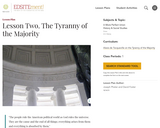
In this lesson, students continue their examination of Tocqueville's argument about the power of the majority and its consequences. Having suggested previously that the majority can crush a minority without even hearing its screams, he elaborates on the dangers of unchecked and unlimited power in democratic America and how to deal with it.

In this lesson, students read primary and secondary source documents about the Supreme Court case Marbury v. Madison and judicial review. Students then answer analysis questions about the case. There is a teacher answer key included in the lesson.

In this lesson, students read primary and secondary source documents about the McCulloch v. Maryland Supreme Court case on the necessary and proper clause. Students then answer an advanced placement style document based question. There is a teacher answer key at the end of the lesson.

Students gain an understanding of the evolving presence of political parties in the history of the United States, as well as the role of third parties in the political process. Students work in groups to apply what they have learned by designing a tombstone for a historical (or rather "dead") US political party.